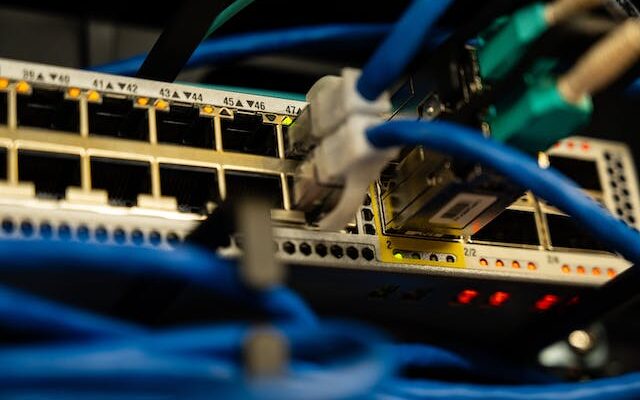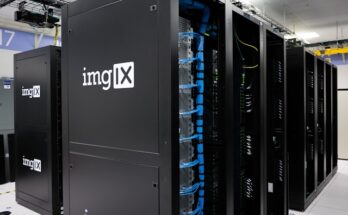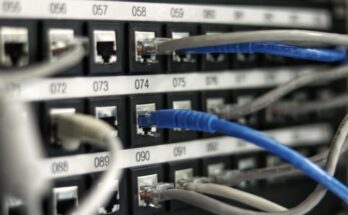The rapid advancements in technology over the last decade or so have propelled the importance of data cabling to the forefront of Australian businesses. Its because of this that we’ll explain to you how upgrading data cabling enhances performance, providing a competitive edge for businesses.
The Growing Importance of Data Cabling in Australia
Data cabling forms the backbone of modern business operations in Australia. It facilitates reliable and efficient communication and data transfer, impacting the overall performance of enterprises. As technology advances, so does the need for high-speed, reliable, and secure data connections, making data cabling installation a crucial aspect of infrastructure.
Understanding Data Cabling
Data cabling encompasses the various cables used to transmit data between network devices. These can range from fibre and copper cables to tray and racking solutions. The role of data cabling in Australian businesses has become increasingly significant, given the reliance on data-intensive applications and digital platforms.

Outdated Cabling vs Performance
Outdated cabling systems often have limited bandwidth, leading to slower data transfer rates. This can impede productivity and cause downtime. Furthermore, outdated systems may pose security risks, as they may not be equipped with the necessary safeguards for today’s digital landscape.
Advantages of Upgrading Data Cabling
Upgrading data cabling offers several benefits. Firstly, it enhances speed and efficiency. High-speed data cabling allows businesses to meet the demands of today’s data-intensive applications, thereby improving operational efficiency.
Secondly, upgraded cabling ensures improved reliability and reduced downtime. An upgraded infrastructure mitigates risks associated with system failures and ensures business continuity.
Lastly, proactive cabling upgrades allow businesses to future-proof their investments. By adapting to evolving technologies, businesses can reap long-term benefits, ensuring that their infrastructure remains robust and relevant in the future.
When considering an upgrade, businesses must comply with local regulations and standards. Navigating Australian standards for data cabling and ensuring legal and regulatory compliance is essential.
Businesses need to conduct a cost-benefit analysis. While upgrading data cabling may involve initial costs, the long-term gains in terms of improved efficiency, reliability, and security often outweigh these costs.

Steps to Upgrade Data Cabling
The process begins with a comprehensive assessment to identify weak points in the existing infrastructure and plan for the integration of upgraded cabling. Businesses should engage professional services for this purpose wherecertified technicians can ensure a smooth transition and provide expertise for optimal results.
Successful Data Cabling Upgrades
Several Australian businesses have successfully upgraded their data cabling and enjoyed enhanced performance. These real-world examples serve as an inspiration for others considering a similar path, highlighting the benefits and best practices for implementation.
Upgrading data cabling is a critical step for Australian businesses seeking to enhance their performance. By investing in modern, reliable, and secure data cabling, businesses can remain competitive in the digital age, demonstrating the crucial role of data cabling in today’s business landscape.




